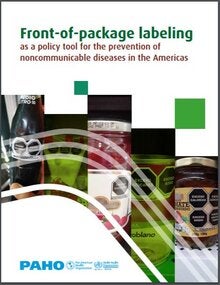Overview
High blood pressure, high fasting blood sugar levels (measured as fasting plasma glucose), and overweight/obesity are the top three risk factors for mortality in the Americas. Unhealthy eating is closely linked to these top three risk factors in the Americas, driven largely by excess intake of sugars, total fats, saturated fats, trans fats, and sodium. The excess intake of these nutrients has been driven largely by the widespread availability, affordability, and promotion of processed and ultra-processed food products that are excessive in sugars, fats, and sodium. As such, an essential part of the solution requires the use of laws and regulations to reduce the demand for and offer of products that contain excessive amounts of critical nutrients.
One of the key policy tools to regulate such products to prevent them from unbalancing diets is the use of front-of-package labeling (FOPL) to indicate to consumers which products contain excessive amounts of sugars, total fats, saturated fats, trans fats, and sodium. To support populations in the Americas in their efforts to meet the World Health Organization recommendations and protect them from the top risk factors harming their health and development, the regulatory objective of a FOPL system should aim at allowing consumers to correctly, quickly, and easily identify products that contain excessive amount of sugars, total fats, saturated fats, trans fats, and sodium. This technical brief summarizes the evidence on the performance of FOPL systems in meeting this purpose and provides a list of frequently asked questions about the nutrition warning system.
|

